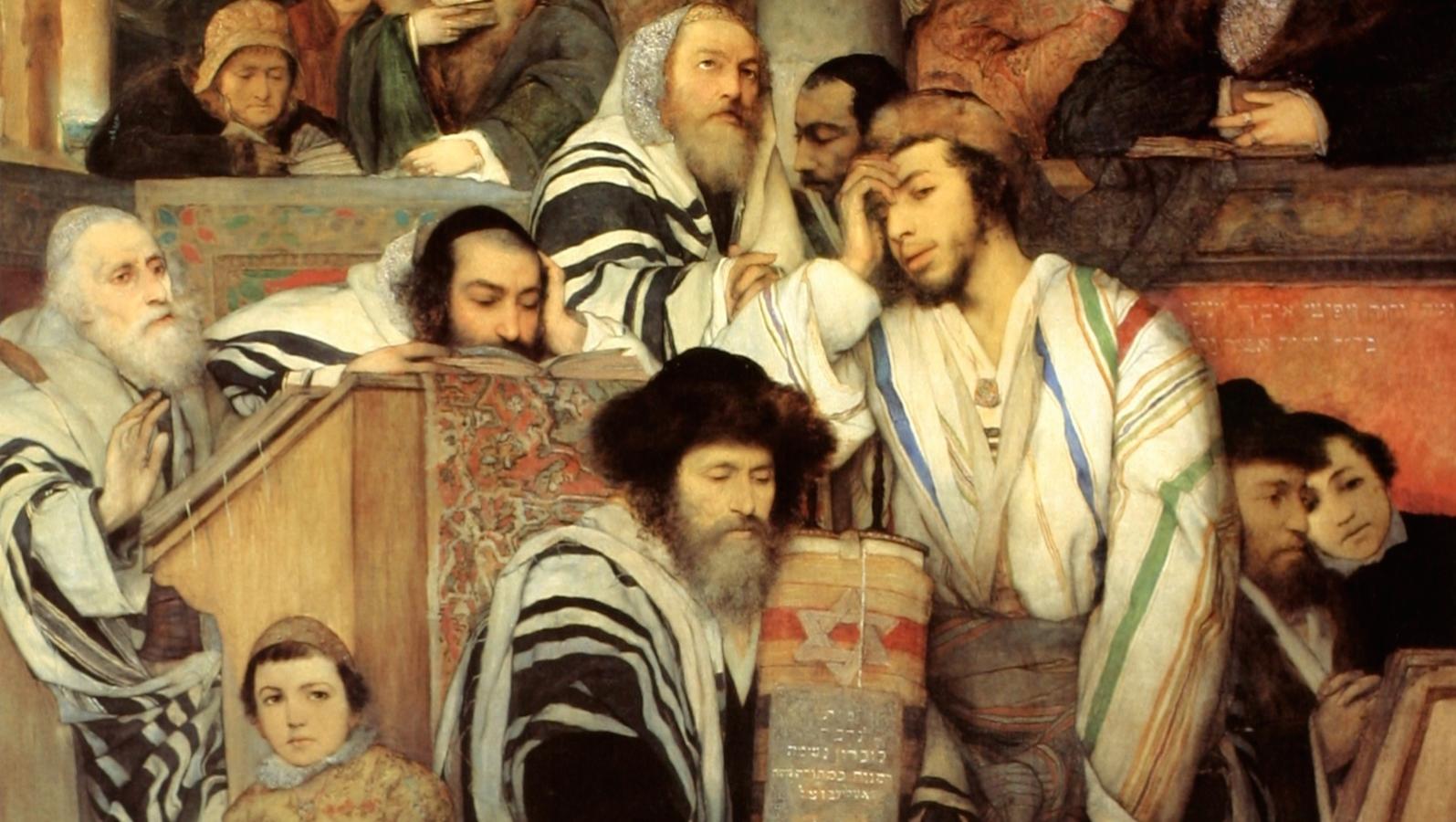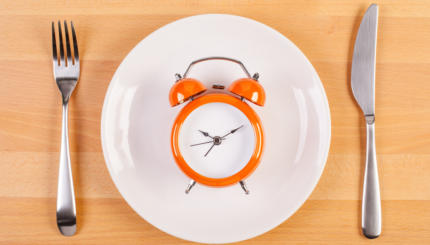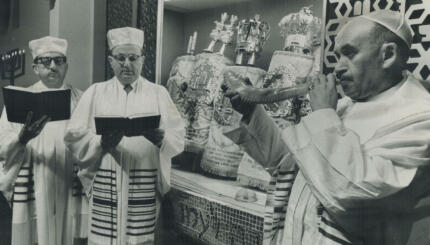The hours preceding Yom Kippur include a number of rituals that are an important part of the transition into the harsh self-assessment of Yom Kippur.
Mincha Afternoon Service
The daily afternoon prayer service, Mincha, includes a special confessional, Viddui. During the Viddui we beat ourselves on the chest for each transgression listed. This action serves as a symbolic punishment for our hearts, which are ultimately responsible for leading us to sins of greed, lust, and anger.
When is Yom Kippur 2018? Click here to find out!
The Meal Before
The tradition emphasizes, however, that one must say the confessional prior to eating the meal that precedes the Yom Kippur fast, a meal known as seudah ha-mafseket (literally, “the meal that interrupts”). After all, as the Talmud says, one may not feel up to confessing after eating a large meal. Or, God forbid, if a person dies at the meal, they will have died without having made the confession and their divine judgment may be less favorable.
With your help, My Jewish Learning can provide endless opportunities for learning, connection and discovery.
That being said, the meal after the Vidui should be large and festive, creating a painful distinction between the satisfaction of a full belly and the longing for food experienced during the fast, while at the same time helping us to complete the entire fast.
Mikveh
Before leaving for the synagogue and the Yom Kippur evening services, people partake in other customs that underscore an important Jewish principle: what is sacred extends from the core of the individual, to family and loved ones. Some people make a point of immersing themselves in the mikveh (ritual bath), a longstanding purifying ritual for not only women, but also men. Going to the mikveh is associated with spiritual transformation (for example, it is used before marriage and before conversion to Judaism) and therefore is a fitting custom to follow as we enter the holiest of holy days.
Blessing Children
In another custom, parents say a special blessing over their children. To the words of the prayer that is recited on the eve of every Shabbat, they add wishes for their children’s welfare in the year to come. It is customary to express hope that they and their children may live upstanding lives, dedicated to acts of lovingkindness, charity, and study.
White Clothing
The manner of dress is important for entering the holiday, as it connects our outward appearance with the proper frame of mind. Therefore, dressing ourselves (and our tables, even though we do not eat or drink until after Yom Kippur) in nice, white apparel is a prominent custom. This sort of dress applies to both men and women. A person who owns a kittel, which is the Yiddish word for a long white gown or robe worn traditionally for special days and as his shroud, is encouraged to wear it.
Fine white clothing is worn for two primary reasons. The first is that on Yom Kippur we are to consign ourselves symbolically to the status of the ministering angels. Wearing fresh, white attire raises our physical and, in turn, our spiritual character to a purer state, free of sin. Also by wearing white, especially the kittel, we are reminded of those who have died and, in turn, of our own mortality, motivating us to greater efforts in our repentance.
Candle Lighting
Finally, in order to sanctify the day, we light candles prior to Yom Kippur. They are lit in the same manner as on Friday nights, but the blessing is followed by the shehehechiyanu, a blessing said in this case for the new season. Another reason for lighting these candles, according to tradition, relates to Moses’ coming down from Mount Sinai on Yom Kippur with the second set of tablets bearing the Ten Commandments (he had destroyed the first set when he found the Israelites worshiping an idol). Because the Torah, which evolved from the tablets, is a light unto the Jewish people, we are lighting candles on this day in honor of the Torah.
We light a third candle as well, known as the ner neshamah, or soul candle. This memorial or Yizkor candle commemorates the souls of our loved ones, traditionally our parents. Lighting candles is often connected with remembering loved ones who have died, as it says in the Bible, “The lifebreath of man (neshamah) is the lamp (ner) of the Lord (Proverbs 20:27).”
Furthermore, in rabbinic literature, Yom Kippur is primarily referred to in the plural — by the biblical Yom Hakippurim. It has been taught that Yom Kippur appears in the plural because we not only ask forgiveness for ourselves, but also for those who have already passed on.
Reprinted with permission from Celebrating the Jewish Year (Jewish Publication Society).
Yom Kippur
Pronounced: yohm KIPP-er, also yohm kee-PORE, Origin: Hebrew, The Day of Atonement, the holiest day on the Jewish calendar and, with Rosh Hashanah, one of the High Holidays.
mikveh
Pronounced: MICK-vuh, or mick-VAH, Alternate Spelling: mikvah, Origin: Hebrew, Jewish ritual bath.



